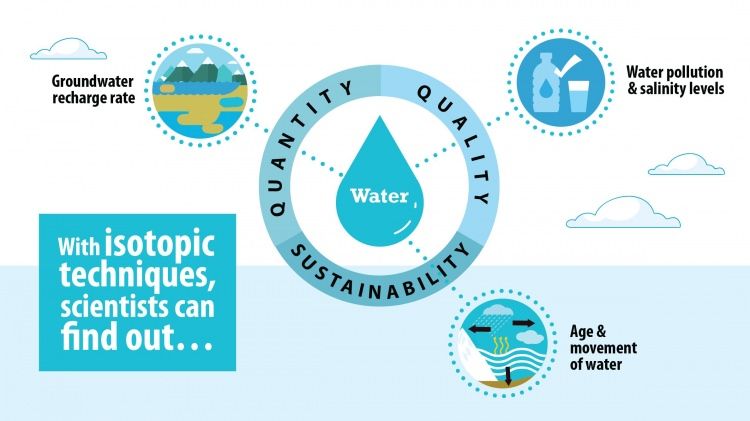How nuclear techniques can help protect precious water
Published on by Water Network Research, Official research team of The Water Network in Technology
In Argentina, like in many parts of the world, water is at risk of over-exploitation and contamination. To protect it, scientists are studying its most invisible details with the help of nuclear technology and the support of the IAEA.

Image source: IAEA
“Most of the fresh, usable water in the world is in the ground, but most of the water that’s available to us is surface water,” said Douglas Kip Solomon, professor of Geology and Geophysics at the University of Utah, who is helping Argentinian experts map their water with the help of the IAEA. “It is extremely important that we understand the interactions between surface water and groundwater so we know how to properly manage these resources and protect them.”
With the help of nuclear techniques, scientists can determine the quantity and quality of their water supplies. They use naturally occurring isotopes as tracers to find out where groundwater comes from, if it is recent or old, if it is being recharged or polluted and how it travels.
The science behind this is called isotope hydrology — a discipline that, according to expert Solomon, “is one of the most powerful, trustworthy tools available to assess groundwater thoroughly.”
“We look to find out exactly how water moves inside aquifers, how it interacts with rivers, and how much of it is left,” said Sandra Ibáñez, isotope hydrologist at the University of Cuyo, Mendoza, who is participating in an IAEA technical cooperation project in the country. The IAEA supports scientists around the world on isotope hydrology, sending experts to the field and training local hydrologists in the use of these isotopic techniques.
Since early 2016, Argentinian isotope hydrologists have been gathering and interpreting data from two strategic regions with the help of the IAEA. The idea is for policy makers to use this information and design improved water management models —hydrological models— for these regions.
Read full article: IAEA
Attached link
http://www.youtube.com/embed/R-MfOrbqL60Media
Taxonomy
- Watershed Management
- Resource Management
- Water Resource Management
- Water Supply
- Stormwater Management
- Water Supply
- Nuclear Energy
- Nuclear Plant Operation